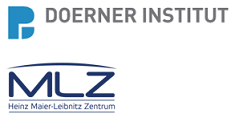Speaker
Description
Ancient Chinese purple-gold glaze (zijinyou) is popular for its beautiful figuration, unique allure and fine craftsmanship. To understand the crystalline nature in the purple-gold glaze, the morphology and structure of crystals precipitated in the glaze layer of purple-gold glaze porcelain fired during the Qing Dynasty were characterized by a variety of methods combining X-ray and electron-based techniques. A large quantity of single-phase twinning ε-Fe2O3 crystals with lengths of 1-3 μm, widths of less than 1 μm, and thickness of approximately 150 nm are found dispersed across the glaze surface to a depth of approximately tens of micrometers. These crystals show stratification across the cross-section of the purple glaze consisting of 4 sublayers according to the crystal size. The formation of ε-Fe2O3 crystals primarily contributed to the reddish-brown tones of the purple-gold glaze. The presence of anorthite, a strong reducing atmosphere during the firing process and the vitreous nature of the glaze influenced the growth of ε-Fe2O3 crystals. These results suggest the controllability of single-phase ε-Fe2O3 crystals by identifying and understanding the underlying chemical processes in ancient Chinese crystalline glaze porcelain, and the findings will provide insights for modern material scientists in preparing ε-Fe2O3 crystals with large sizes and high purities.

